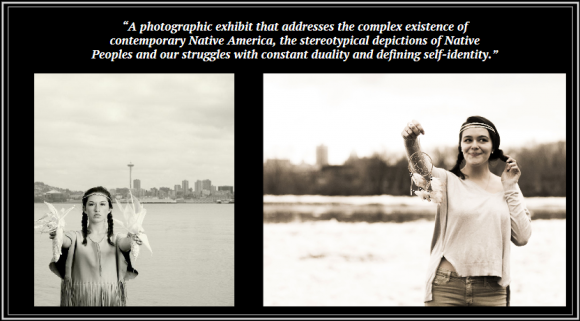Kelly Webber
Web Manager
In a world that becomes more globalized by the day, the distinction between cultural appreciation and appropriation becomes a vague shade of gray rather than a black-and-white issue. Recently students and professors have been engaging this topic through classes and panel discussions.
Native American Culture Professor Andrew Hermeling said, “If you want to engage with Indigenous cultures, you have to take the time to actually learn. You can’t just take from a culture, you also need to support that culture. You need to be willing to engage with the complexity of the issues that Indigenous people face every day.”
Americans purchase mass-produced dreamcatchers because they find native artwork beautiful. However, many dreamcatcher consumers cannot identify the craft’s cultural context. Meanwhile, the tribes who created dreamcatchers are amongst the poorest communities in the United States and receive no compensation for their creations.

Quote and left photo by Matika Wilber, right photo taken by Marisa Harris for Native American Cultures course.
According to Hermeling, we are emerging from “the one-two punch of Native appropriation: Halloween and Thanksgiving,” in which “Indian costumes” treat a culture as a costume. Hermeling said that in an attempt to appreciate other cultures, the appropriation of Native American cultures reduces a diverse population (573 distinct tribes) to nothing but a misrepresentative caricature (sometimes literally, as depicted by the Washington Redskin’s mascot).
In response to the emerging conversation about cultural appropriation both on and off campus, the Multicultural Council hosted an open council this past Wednesday. The event included a panel, videos and articles defining appropriation, and a Q&A session.
The panel consisted of five student representatives and one faculty member: Resident Director Amy Nicols, ASU President Laura Almeida, BSU President Nora Nworu, LAL President Luz Nieto-Gonzalez, ASA President Pearl Tangsirisatian and IsaMuKappa Vice President Ines Yoon.
The panel represented diverse identities, including international students, missionary kids/third culture kids, and Americans with unique cultural backgrounds and identities. Topics discussed in relation to cultural appropriation included music, hair (braids and cornrows), henna, sombreros and many more.
Ines Yoon shared a personal experience. In an international elementary school in Guatemala, a young Yoon sat down for lunch. She opened her lunch box of homemade Korean food. Her predominantly white peers mocked her food and its fragrance. Years later, Yoon sees the same peers posting snapshots of Korean Barbeque on Instagram.
There’s nothing wrong with enjoying KBBQ, is there? It tastes delicious and is an amazing aspect of East Asian culture. Panelists noted the problem occurs when cultures are treated as trends, histories of colonization are dismissed and those with power reduce marginalized groups to a stereotype. It’s a matter of both intention and impact.
During the Q&A session, a student submitted an anonymous question asking if MCC events, such as Diwali with its long line for students to have henna painted on their arms, constitute cultural appropriation. “When MCC has events like Diwali night and the International Banquet, we’re inviting you to learn about our cultures and celebrate with us,” said MCC President Gloria Igihozo. Diwali Night included not only South Asian activities, food, and art but also posters providing students with the cultural context of Diwali and its festivities.
If you are interested in learning about and respecting culture holistically rather than tokenizing the aspects that are convenient and trendy, there are many ways to get involved in cultural exchange oriented environments. MCC invites students of all cultural backgrounds to attend club meetings and events to celebrate a variety of cultures with an emphasis on learning, respect, and celebration of diversity.
For more information on cultural appropriation:
